| |
|
|
| |
Mira Mar Veterinary Hospital
|
|
| |
|
|
| |
|
|
| |
|
|
|
|

|
| |
FEBRUARY NEWSLETTER
|
|
| |
|
|
| |
Hello and welcome to February!
The new year has well and truly kicked off at Mira Mar Vets, with good weather and lots of pets to keep us busy!
We are very excited to welcome back Dr Jialin, who has been off work with a badly broken leg for the past 12 weeks. She is only working a few hours at a time while she is still healing and in a moon boot, but it's great to see her up and about, and to see her smiling face back at the clinic!
We are also happy (and slightly envious) to welcome back Dr Dave, who has been travelling Europe for a month with his family, enjoying winter in the Northern hemisphere and a beautiful white Christmas!
This edition of the newsletter has some great articles about your pets different internal organs (bladder, bowel, heart, liver and brain). We explain some of the common diseases that can affect them, how we can test and what we can do to help.
We hope you enjoy it! |
|
|
|
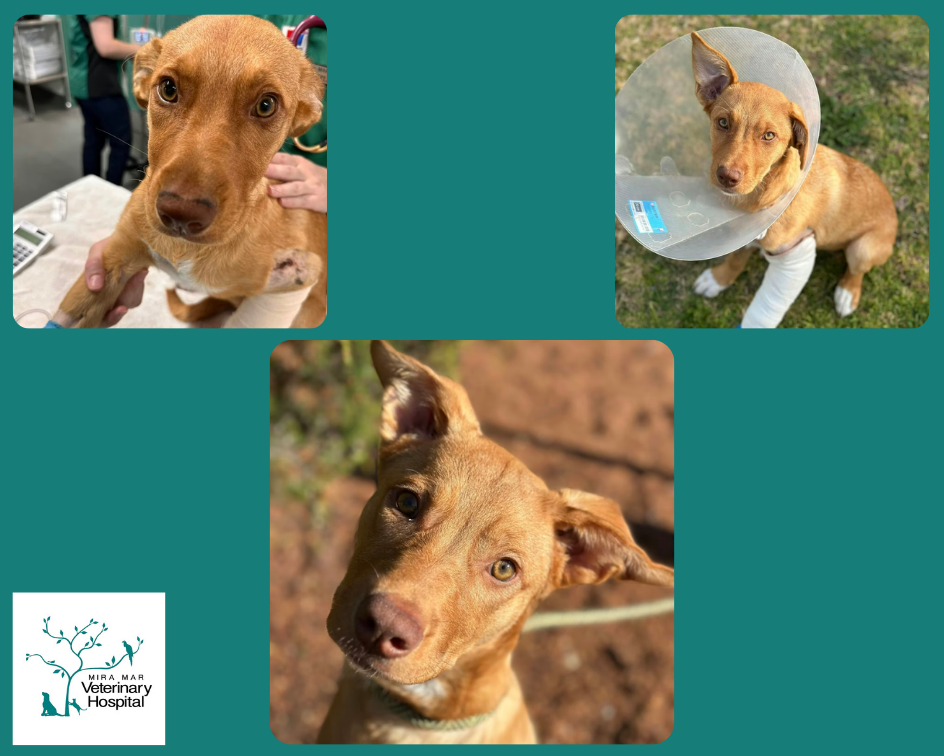
|
| |
Mango finds a home!
|
|
| |
|
|
| |
This little cutie is Mango! About 6 weeks ago she was surrendered to the clinic after suffering from a dog attack to her front leg resulting in a bad break.
We all fell in love with her, and so her leg was plated and bandaged, and she was diligently fostered by Nurse Sam while she healed. After 6 weeks of confinement and care, we are thrilled to announce that she is all better and has found a new home!
We wish Mango and her new owner all the best, and hope to see her again soon for some puppy cuddles! |
|
|
|

|
| |
Struggling with pet flatulence? Here’s how to help
|
|
| |
|
|
| |
You’re cuddled up with your pet on the couch, watching your favourite TV show. All is well until an unpleasant odour wafts up to your nostrils…
Sound familiar? If your pet has a reputation for nastier-than-usual flatulence, read on for our top tips on how to tame those toxic toots.
Why do some pets have more unpleasant flatulence?
Flatulence is a normal mechanism for clearing excess gas from the intestinal tract. Some of this gas is simply air swallowed during eating, while the smellier gases are produced by bacteria within the large intestine during fibre digestion.
Flatter-faced dogs tend to pass more wind due to their increased mouth-breathing tendencies (we’re looking at you, french bulldogs!). However, any pet can experience abnormal intestinal function or imbalanced gut bacteria (resulting in nastier toots) due to:
- A course of antibiotics
- A rapid dietary change
- The pet eating something they weren’t meant to
- A tummy bug
- A gastrointestinal disease or pancreas problem (such as inflammatory bowel disease or exocrine pancreatic insufficiency)
How can you help reduce flatulence in your pet?
In general, you can help wind down your pet’s windiness by:
- Encouraging slower eating (e.g. using a slow feeder bowl)
- Feeding smaller meals two to three times daily, rather than one large meal
- Trialling a good quality probiotic supplement for your pet – ask our team for recommendations
- Trialling your pet on a balanced high digestibility/low residue (fibre) diet – remember to transition to the new diet gradually over 7-10 days
- Avoiding diets or treats containing soy, peas or dairy
However, if your pet is suffering from any other unwellness symptoms (such as vomiting, diarrhoea or weight loss) in addition to their flatulence, we would recommend a prompt assessment with one of our vets. Your pet may have more going on and require more in-depth diagnostics and management to “get to the bottom” of their issue! |
|
|
|
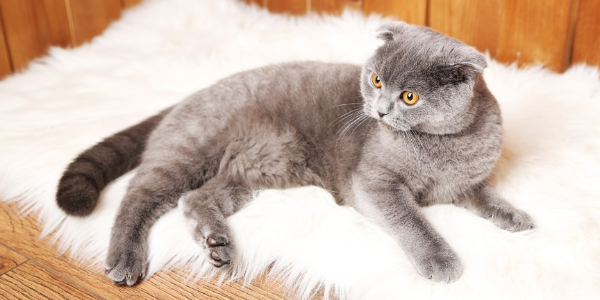
|
| |
From sink to saviour: How Wallace’s bladder woes were resolved
|
|
| |
|
|
| |
Wallace, the eleven-year-old British Shorthair cat, was a polite and dignified little gentleman. When he was found passing urine in the bathroom sink, his owner, Frances, was startled, to say the least.
On closer inspection, Frances noticed that Wallace seemed to be straining uncomfortably, and his urine had a pink tinge. Since Wallace was a male cat (and Frances remembered a serious bladder blockage episode in her friend’s male cat), she decided to phone her vet for advice straight away.
The veterinary staff reassured Frances that Wallace's continued bright appearance, eating, and ability to pass urine were good signs, but it was safer to perform a prompt check on him regardless.
Later that morning, Wallace was assessed by his regular veterinarian. He was found to be well-hydrated and appeared generally healthy. Fortunately, he also showed no symptoms of urinary blockage at that time. However, whilst his bladder was not enlarged, it did feel a bit irregular and thickened.
Given the cat’s age, Frances was happy to take the vet’s recommendation that Wallace be admitted for urine tests, blood tests, and bladder imaging. His urine tests showed significant amounts of blood and mineral crystals and evidence of infection. On his abdominal x-rays, he had multiple bladder stones - solidified urine minerals irritating the bladder lining.
Given that testing so far had indicated Wallace’s urine crystals were most likely of a chemical composition known as “struvite,” Frances elected to have him started on a course of antibiotics and a special prescription diet that can dissolve this type of bladder stone over several weeks.
To Frances’s relief, Wallace responded well to the treatment. Two months later, repeat testing showed that the bladder stones and infection had resolved. To dignify Wallace’s great relief, he no longer feels the urge to sully the sink.
This fictional case study has been created to illustrate how urinary health issues in cats can be managed and is not based on a real-life case. |
|
|
|
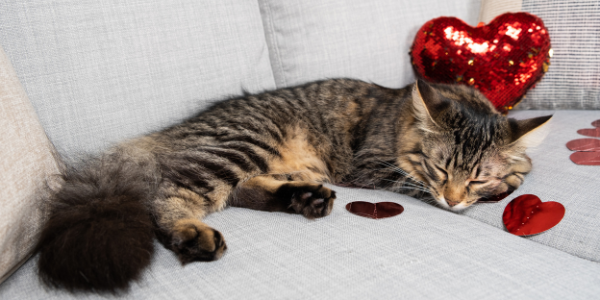
|
| |
The heart of the issue: Understanding abnormal heart sounds in cats
|
|
| |
|
|
| |
As part of your cat’s regular wellness examinations, our vets will assess the rate, sounds, and rhythm of its heart. Atypical heart sounds include murmurs (abnormal “whooshing” sounds) and gallop sounds (extra sounds in addition to the usual “lub dub” rhythm).
What causes abnormal heart sounds in cats?
Abnormal heart sounds can occur for several reasons in cats, including:
- Congenital heart issues (i.e. a structural heart problem that your cat was born with)
- Acquired heart disease (e.g. a damaged heart valve)
- Other causes of unwellness affecting heart health (e.g. an overactive thyroid gland or high blood pressure)
- Stress hormones temporarily affecting heart function, causing what is known as a “physiologic” or “benign” murmur
Are certain breeds of cats more prone to heart problems?
Maine coon, Persian and ragdoll cats are unfortunately predisposed to developing hypertrophic cardiomyopathy, one of the most common acquired heart diseases seen in cats.
What should I do if an abnormal heart sound has been detected in my cat?
Unfortunately, heart murmurs in cats can be misleading; not every cat with heart disease will develop an audible murmur, whilst on the flip side, heart murmurs can occur for harmless reasons, as per the “benign” murmurs listed above.
If we hear abnormal heart sounds in your cat (or if your cat is of a breed predisposed to heart disease and you would like them screened), we will discuss further investigation to assess their risk of issues.
The first step is usually an evaluation of your pet’s general health with blood tests and blood pressure measurements, as this checks for diseases that can affect heart health. There is also a blood test called NT-proBNP, which can help screen your cat for evidence of heart problems.
Depending on your pet’s results, the next step may be to refer your pet to a specialist for an echocardiogram (heart ultrasound).
For more information on feline cardiac health, consult our heartily knowledgeable team. |
|
|
|
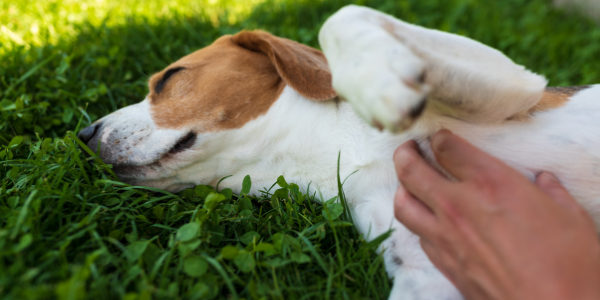
|
| |
All about liver health: When and why to check your pet’s liver
|
|
| |
|
|
| |
When we run blood tests on your pet, we have the option of checking their liver values. While knowing about a pet’s liver health is always helpful, these tests can be particularly useful in certain situations. Read on to learn more.
Why might we want to check a pet’s liver health?
The liver has many important functions within the body, including breaking down toxins, producing substances that help blood to clot normally, and metabolising carbohydrates, proteins and fats.
It’s particularly important to check your pet’s liver health if:
- They are unwell or seriously injured
- They may be prone to liver problems (e.g. older pets and certain breeds such as Bedlington terriers or Dobermans)
- If your pet is about to start regular medications or undergo a procedure under general anaesthesia (so we can pick the safest drugs for them)
- If we suspect your pet to have eaten a toxic substance
What blood tests can we run for the liver?
The most common blood parameters we check when assessing the liver are ALT and ALP. These are enzymes (proteins used for chemical reactions) that can become elevated if the liver has been damaged. They can increase due to actual liver problems (e.g., a toxin or infection) or other issues affecting liver health, such as hormonal imbalances or shock (poor blood flow).
For an assessment of actual liver function, we can run other, more in-depth blood tests.
What happens if my pet has abnormal blood results?
If your pet's blood tests show abnormalities, we will recommend further assessment or treatment based on its general health picture.
For instance, an older pet may be recommended to undergo an abdominal ultrasound to assess their liver appearance, whereas a pet who is suspected to have eaten a toxic substance would be started on appropriate medical treatment and monitored.
For more information on assessing your pet’s organ health, consult our organ-ised team! |
|
|
|

|
| |
Pet seizures: Causes, recognition, and what to do in an emergency
|
|
| |
|
|
| |
In terms of emergency unwellness episodes, watching your pet have an unexpected seizure can be highly distressing.
In this article, we’ll discuss common causes of seizures, how to recognise them, and what to do if your pet experiences one.
What is a seizure?
A seizure is the abnormal activation of clusters of brain cells that causes uncontrollable physical symptoms in the patient. They can be “partial”, affecting only one region of the body, or generalised (also known as “grand mal”), usually causing unconsciousness, full-body muscle twitches, and a loss of toileting control.
Depending on their underlying cause, seizures may occur as a one-off event or can recur and potentially become more severe over time.
What causes a pet to have a seizure?
Causes of seizures in pets can be divided into two main categories:
- Primary epilepsy – this is when a pet spontaneously seizures due to a genetic brain issue (or an unknown cause)
- Acquired epilepsy – this is when a pet develops seizures secondary to an underlying problem in the body (e.g. low blood sugar or a toxin) or in the brain (e.g. brain trauma or a mass)
What should you do if your pet has a seizure?
If you witness your pet having a seizure, try to carefully move them away from any obvious physical hazards, provided it’s safe to do so. Then, stand back and time their seizure activity. Seizures usually last a few seconds to a few minutes, but severe episodes can last for hours or occur in clusters.
If your pet seizures for more than two minutes, you should seek emergency veterinary care for them, as episodes more than several minutes long can cause brain damage.
However, even if your pet’s seizure ceases within a couple of minutes, it’s still recommended to have them checked promptly by our team if:
- It was their first ever episode, or
- They have a history of seizures and have experienced more than one in the last week or an increasing seizure frequency overall
For more information on pet neurological health, consult our brainy vets. |
|
|
|

|
| |
Animal News In Brief
|
|
| |
|
|
| |
Fishermen rescue missing kelpie stranded on cliff face
Rory Deavin and his son Matt were fishing near Jervis Bay when they spotted Reece, a missing kelpie, stranded on a rocky cliff. With Matt wearing a life jacket, he swam ashore and scaled the cliff to rescue the dog. "The dog was more or less talking to us, saying, 'Save me,'" Rory shared. Despite rough swells, Matt managed to guide Reece down the cliff, and the kelpie swam behind the boat to safety. Reece’s owner, who searched tirelessly for 11 days, said she was “eternally grateful” for the fishermen’s bravery.
Click here to read the full story at ABC News.
Couple reunited with stolen dog after five years
Rusty, a beloved Jack Russell Terrier, was stolen from his Coonabarabran home five years ago, leaving his owners devastated. Miraculously, he was recently found in Townsville, over 1,500 kilometres away, by a rescue group. Thanks to his microchip, Rusty’s family was quickly contacted. "It felt like a dream seeing him again after so long," his owner said. The emotional reunion brought joy to the family and their long-lost dog.
Click here to read the full story at ABC News.
Loyal pup runs errands for his owner in Colombia
Every Sunday, Doña Graciela in Antioquia, Colombia, sends her loyal pit bull mix to fetch groceries. Equipped with a saddlebag containing her list and money, the pup happily trots to the local market. "He knows exactly where to go," she shared. At the store, shopkeepers retrieve the list, pack the items, and secure them in his backpack. The well-behaved dog patiently waits before heading home with his precious cargo. “He even brought back the change!” Doña Graciela said, smiling as she rewarded him with a treat.
Click here to read the full story at The Dodo. |
|
|
|
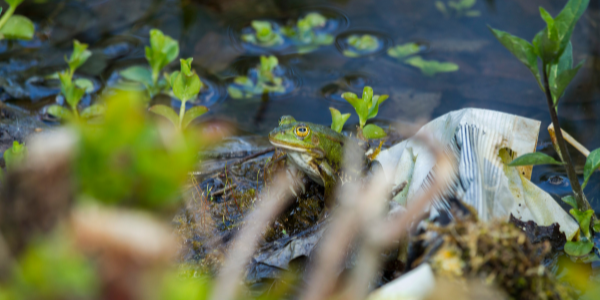
|
| |
Cataloguing new ways to help species adapt to climate change
|
|
| |
|
|
| |
Australia’s natural environment is changing rapidly as the planet warms, putting many species under threat. To support conservation managers, researchers have created AdaptLog, a free online tool cataloguing over 400 innovative interventions to help wildlife adapt to a changing climate.
These strategies include building habitats like “cod logs” for endangered Mary River cod, which provide shelter for spawning fish, and “frog bogs,” specially designed ponds that protect frogs and their tadpoles. “Early results have been encouraging, with large male cod using the logs as nesting sites,” researchers noted.
Cooling systems are another key innovation. For example, sprinklers in trees have prevented mass flying fox deaths during heatwaves, and irrigation helps regulate turtle nest temperatures to encourage healthy hatchlings.
This collaborative effort, supported by WWF-Australia and other organisations, highlights the power of sharing knowledge to act swiftly. As one researcher put it, “By collating what is happening already, we hope to encourage the development of more innovative approaches.”
Click here to read the full story at The Conversation. |
|
|
|
| |
This email contains comments of a general nature only and is not intended to be a substitute for professional veterinary advice. Please always consult your vet for specific advice on your pet's individual needs.
All content © Petpack 2025 |
|
|
|
[Footer]
|